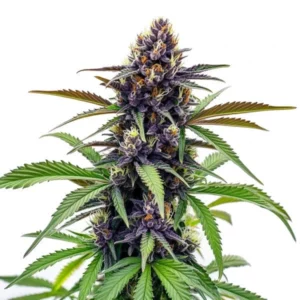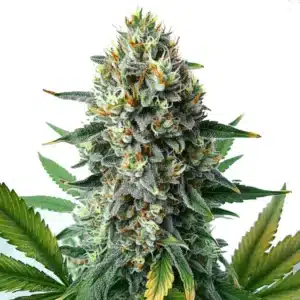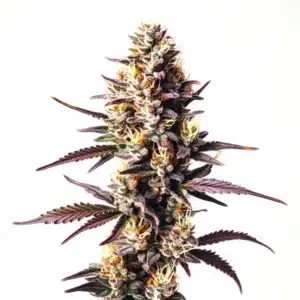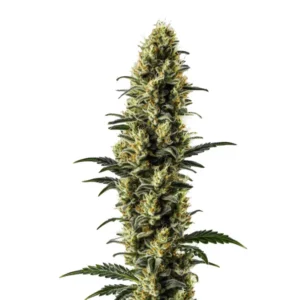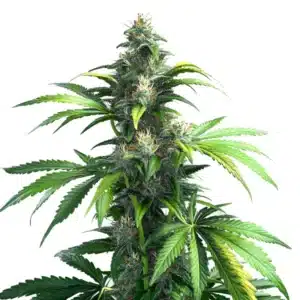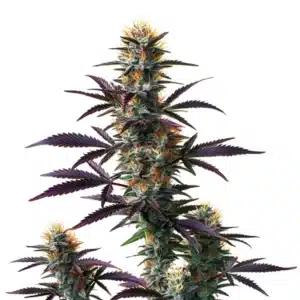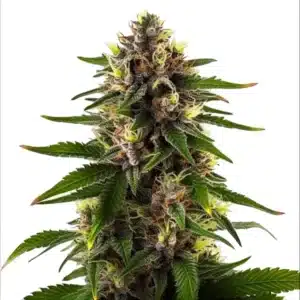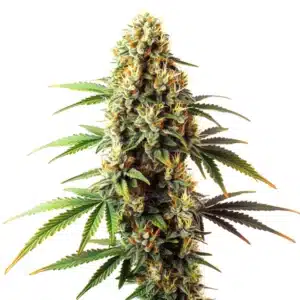
Your Plant’s Panic Attack: What is Oxidative Stress and How to Fix It
You hear the term “oxidative stress,” and it sounds like something out of a chemistry textbook. But let’s break it down into simple terms. Think of it as your plant having a full-blown panic attack. It’s overwhelmed, its internal systems are going haywire, and it starts showing ugly symptoms like yellowing, discolored, or “rusty” looking leaves.
Your plant is screaming for help. But what’s causing this cellular breakdown?
Recommended Strains
Black Domina
|
|
THC | 15% - 20% (Medium) |
|
|
Type | Feminized |
|
|
Yield | High |
|
|
Phenotype | 95% Indica / 5% Sativa |
Black Cherry Soda
|
|
THC | 15% - 20% (Medium) |
|
|
Type | Feminized |
|
|
Yield | Low |
|
|
Phenotype | 50% Indica / 50% Sativa |
The #1 Cause You Can Control: Your Water
More often than not, the culprit that sends your plant into a panic is your water. Specifically, wild swings in your pH.
When the pH at your root zone drops below 5.0 or spikes above 7.0, you are literally causing your plant’s cells to oxidize, to rust from the inside out. This locks the plant up, preventing it from absorbing the nutrients it needs to defend itself. This is why being an absolute fanatic about your water is the key to prevention. Your target for watering your soil is a stable pH of 6.0. No excuses.
Promos & Deals
Other Common Stressors That Fuel the Fire
While pH is often the main villain, other factors can push your plant over the edge.
A classic beginner mistake is watering your leaves in direct, intense sunlight. Those little water droplets act like tiny magnifying glasses and will literally scorch your leaves, causing brown and yellow spots that look exactly like the symptoms of oxidative stress. Water the soil, not the leaves, when the sun is high.
And keep your plant clean! The underside of the leaves is where your plant breathes through tiny pores called stomata. If these get clogged with dust or, even worse, infested with pests, the plant can’t transpire properly. This is a massive stressor that contributes to the panic attack. A gentle wipe-down now and then can work wonders.
The Emergency Reset: How to Calm the Panic
Okay, so your plant is showing the signs. The leaves are looking sick. It’s time to hit the reset button.
You’re going to perform a root flush. Drench the soil with a large amount of clean water with a minimal EC (as close to pure water as you can get) and a pH lowered to 5.5. This massive flush washes away any locked-up nutrient salts and resets the environment in your root zone.
After the flush, you need to help your plant recover and rebuild. This is where supplements containing natural plant growth hormones like auxins and gibberellins are a lifesaver. Think of products made from kelp or seaweed. These are like a vitamin B shot for your plant, helping it bounce back from the stress and encouraging new, healthy growth.
Choosing a genetically resilient strain like Blackberry Kush or Blue Dream gives you a head start, as they are naturally better at handling stress. But even the toughest plant can be brought to its knees by a bad environment. When you Cultivate, your first job is to provide stability. Nurture the roots, and your Homegrown plants will Thrive.

FAQs
What is oxidative stress in simple terms?
Think of it as a “plant panic attack.” The plant is so overwhelmed by an environmental problem (usually bad pH) that its internal defense systems break down. This causes cell damage that shows up as yellowing, “rusty,” or burnt-looking spots on the leaves.
What is the most common cause of oxidative stress in cannabis?
Wild swings in the pH of your water and soil. When the pH is too high or too low (outside the 6.0-7.0 range for soil), the plant can’t absorb nutrients properly and its cells begin to break down. Maintaining a stable pH of 6.0 in your water is the single best preventative measure.
How can I help my plant recover from oxidative stress?
First, hit the reset button with a root flush: drench the soil with lots of clean, low-EC water with a pH of 5.5. This cleans the root zone. Then, to help it recover, give it a feed with a supplement rich in natural plant hormones like auxins and gibberellins (kelp and seaweed products are great for this).
Can watering my leaves in the sun really hurt my plant?
Yes, absolutely. Water droplets left on the leaves under intense sun (or a powerful grow light) act like tiny magnifying glasses and will literally scorch the leaf tissue. This creates brown or yellow spots that are a form of physical damage and look very similar to the symptoms of oxidative stress.



